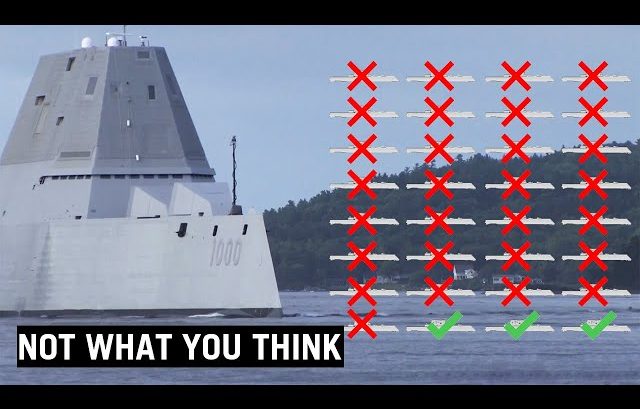Why was the Zumwalt Destroyer program canceled? We dig deeper into what led to the cost overruns causing the US government to cancel it.
History
Zumwalt was envisioned in 1994 as a part of the SC-21rd program with a mission to design 21st-century land attack ships for the US Navy.
The Zumwalt class was supposed to replace the aging Arleigh Burke destroyers, becoming a 21st-century super destroyer for the next 50 years.
21st-century Warship
As a 21st-century warship, it was supposed to be filled with new and revolutionary technologies such as the integrated power system and total ship computing environment infrastructure, running a Linux instead of the aegis combat system used on Arleigh Burke-class destroyers.
32 Ship Program
Originally, the US Navy envisioned a 32-ship program costing 46 billion dollars, each ship costing about 1.3 billion. However, as the costs mounted, the program size was reduced from 32 to 24 and then to 16 ships.
However, by 2005, the cost of each ship ballooned to 39 billion dollars causing the Navy to further reduce it to 7.
What Made it So Expensive?
The Zumwalt-class Destroyer was supposed to be 40% larger than the previous destroyer. It would also have a displacement of 16,000 tons.
Also, if the Zumwalt experiences significant damage while in combat, it would have a lesser chance of survival compared to traditional Navy ships of a similar size simply because it had fewer crew members to save the ship. Moreover, using stealth technology for a large ship is extremely expensive.
Cancellation
The ships were also to be equipped with a specialized gun system. Originally, each LRAP round was estimated at $35,000. But when 29 out of the 32 planned destroyers were canceled, the price ballooned to a range of $800,000 to $1,000,000.
What was left was three Zumwalt Destroyers with no ammunition. Meaning, the ships couldn’t provide naval gunfire support. Consequently, the Navy repurposed Zumwalt class ships to surface warfare.



